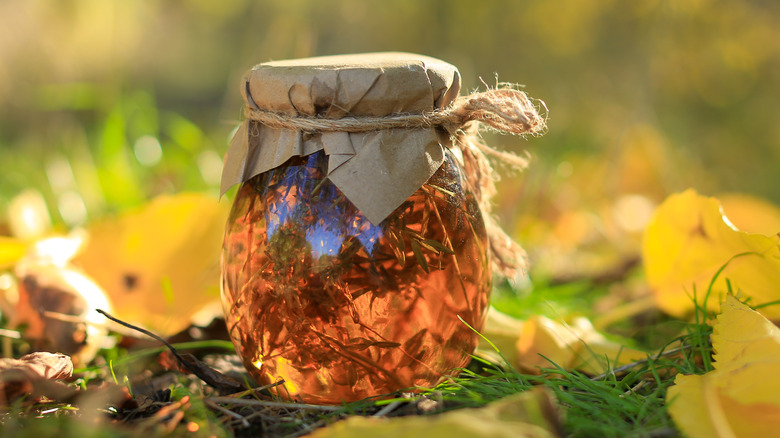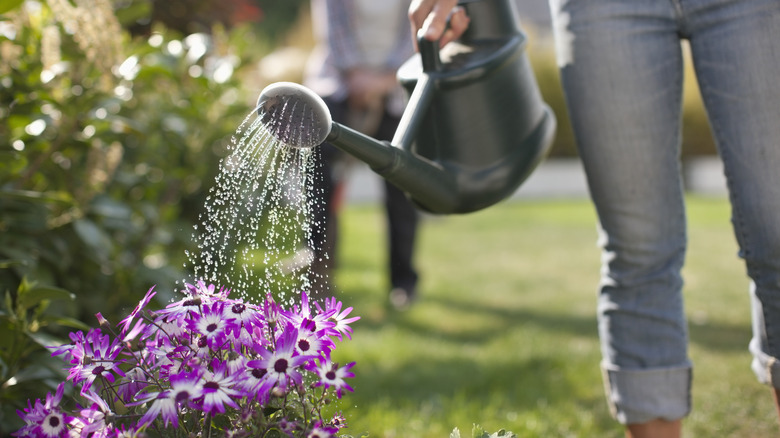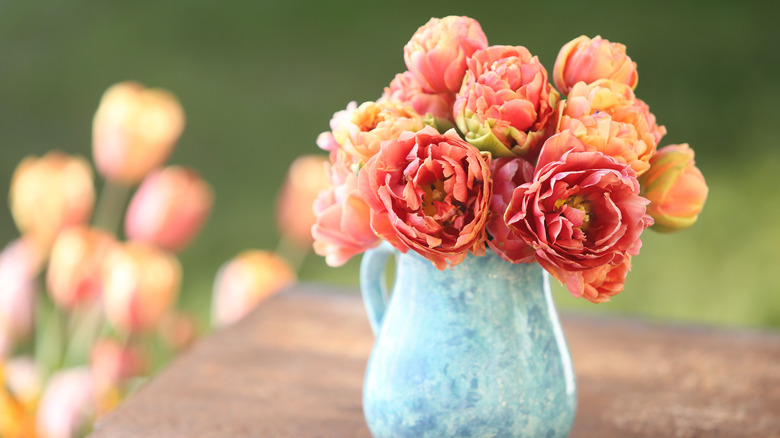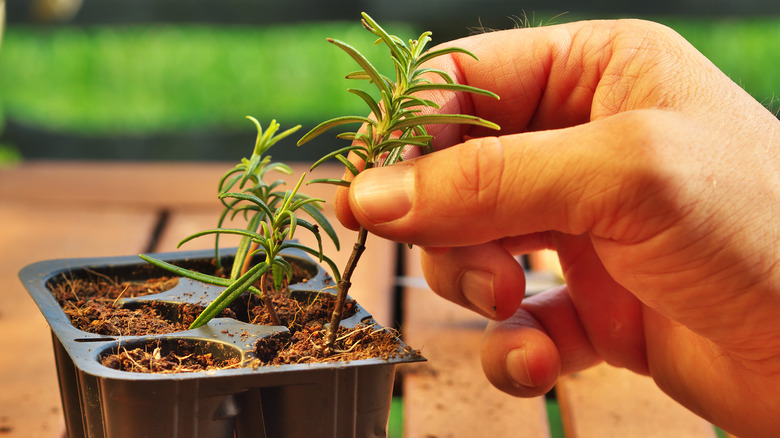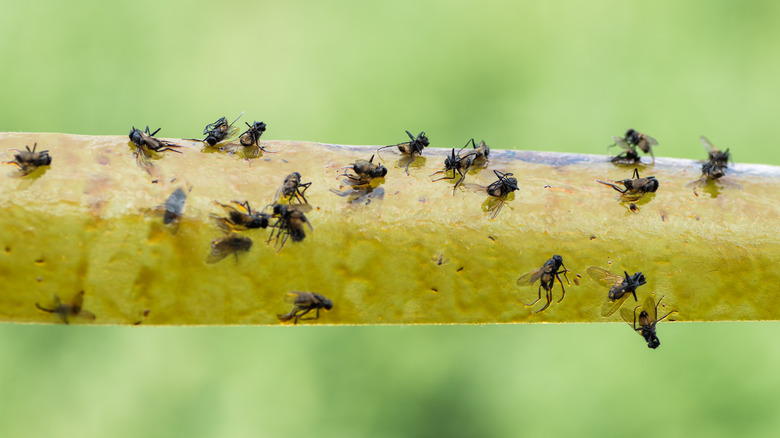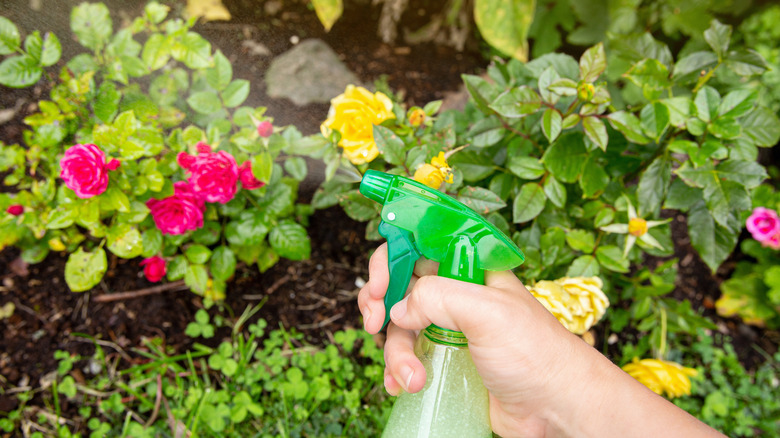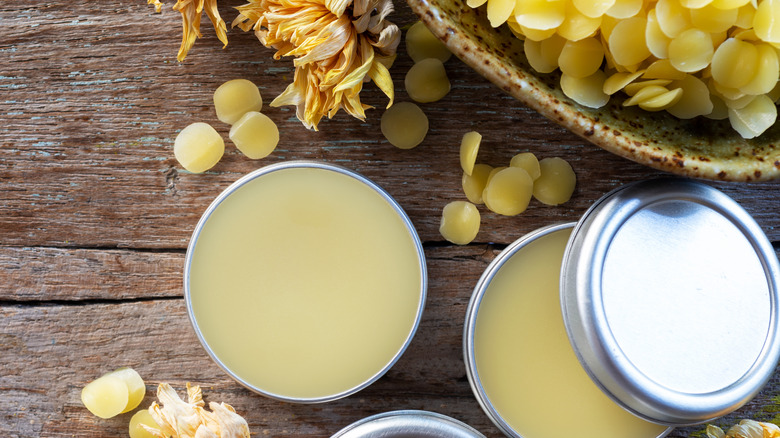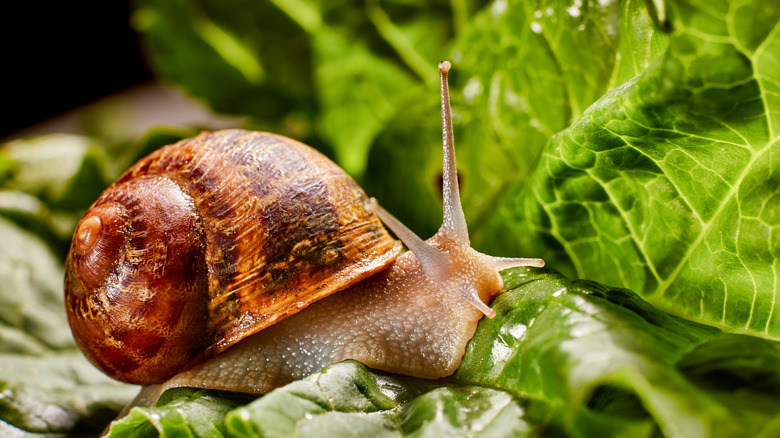Why You Should Be Using Honey In Your Garden
You probably already know that honey not only tastes good, it's good for the human body too. This is due to its high nutritional content; honey contains everything from vitamins and minerals to proteins, amino acids, and antioxidants. Its uses spread back millions of years both as a food and a folk medicine that has been proven effective time and time again. So we've got some exciting news for the gardeners: This means that honey is also good for the living beings out in our gardens. No, not the squirrels and the deer that we're desperately trying to keep away; we're talking about our plants.
Here at House Digest, we're always on the lookout for smart home gardening hacks that make us feel like we really know what we're doing out there in the backyard, and there are many applications for honey. They're all easy to do and require little more than what you've already got in the pantry: a jar of golden honey ready to be put to work.
Apply honey as a natural fertilizer
Did you know that honey is a common household item that can be used as natural fertilizer? Because it is packed with so many nutrients, it can go a long way in the drive to improve plant and soil health. While your regular fertilizer will take care of the three macronutrients (nitrogen, phosphorous, and potassium), honey will swoop in with a wide array of micronutrients like iron, zinc, calcium, and magnesium. A nutritious bath of honey water can improve the health of the root systems and bring struggling plants back from the brink.
All you're going to do for this is mix honey and water together in a watering can, and gently douse your plants with the mixture — about 1 tablespoon of honey to 1 liter of water is a good ratio to start with. (Always dilute — do not apply the sticky stuff directly to plants.) Use honey water when your plants are actively fruiting for sweeter tasting produce. This solution might also bring pollinators to your garden, and who could say no to more hummingbirds, bees, and butterflies?
Cash in on the antibacterial and antimicrobial properties of honey
In addition to high levels of nutrients, honey also has antibacterial and antifungal properties. These aspects of the golden goodness are best put to use in a vase full of freshly cut flowers because they will help the blossoms stay fresh for much longer. The next time you have a hankering for a bouquet of blooms, step into the kitchen for a minute before heading out into the garden with your cutting shears. Ideally, you'll want to use equal parts apple cider vinegar (ACV) alongside honey for this recipe. Measurements don't need to be exact, but shoot for about 2 tablespoons of honey and 2 tablespoons of ACV in a vase full of water.
After you've cut your flowers, remove the leaves from the bottom of each stem and arrange the bouquet in the vase. Change out the water every few days — and don't forget to give your stems a little trim each time and add more ACV and honey to the water. These cut flowers will be fresh longer than you think!
Encourage growth on cuttings with a honey root stimulant
Using rooting hormone on plant stem cuttings is a tried and true way of encouraging stronger and faster root growth, which leads to successful propagation. Store bought rooting hormone options come in liquid, powder, and gel forms, all of which are made of some combination of chemicals. For an all natural approach, look to the honey sitting in your pantry or cupboard. Start with a mixture of 2 teaspoons honey dissolved into 2 cups boiling water. Let the solution cool and dip your scored stem cuttings in it just as you would with any other rooting hormone. From there they'll go directly into your growing medium or potting mixture. Check back in a week or two to look for progress.
If you try using honey as a rooting hormone and it doesn't work, it may be the type of the plant. A study from University of Hawaii at Manoa showed that master gardeners had a 99% success rate for some plant species but only 18% success with others. If all else fails, you can go back to your regular rooting powder or gel, but this hack will definitely be worth a try.
Lure pests away from plants with honey water
It's not just humans who are drawn to the delicious sweetness of honey. Lots of pests that we'd rather not have hanging around our plants like it too, which means we can employ it to lure them away from our prized vegetables. If it's flies that are causing a ruckus around the rutabagas, an easy DIY flycatcher can be made from any strip of plastic covered in honey and hung in a conspicuous location. Similarly, you can hang a plastic soda bottle full of honey water to trap fruit flies, wasps, and other insects. Cut off the neck of the bottle and then flip it upside so it sits inside the base of the bottle and becomes a funnel that will drop the insects right into the honey water waiting below.
Those with an ant problem can put a mixture of honey and boric acid in a shallow tray or container lid; not only will it lure ants away from plants, it will poison them, but not before they bring it back to their nest where it will kill other ants. Be careful with this one, of course, because boric acid could be dangerous to pets and children.
Perk up tired plants with a honey-based foliar spray
A 2021 study published in Plants-Basel, an international botanic science journal, shows that honey has the ability to increase drought tolerance in plants by replacing nutrients and antioxidants. This is good news for gardeners experiencing extreme heat waves and long periods without regular rain. If your standard watering schedule doesn't seem to be cutting it, you can mix together a homemade foliar spray with just honey and warm water. It really couldn't be easier.
Don't overdo it with the honey or things can get sticky; a few teaspoons in a gallon of water will be plenty. Warm water will help it melt and mix. Pour the solution into a spray bottle and you're ready to roll. Remember that foliar sprays are meant to be applied directly to leaves, so generously spritz the foliage until it's completely coated. Foliar spray applications won't take the place of your regular fertilizer routine, but this is something you can do on a weekly or bi-weekly basis for an added boost of nutrition.
Soothe chapped lips and minor cuts with honey balm as you garden
Working all day in the hot sun can take a lot out of a gardener. Wide brimmed hats, long sleeves, and gardening gloves are all recommended, but what about the parts of our bodies that we can't cover up? A soothing balm made from honey is a great all natural option for moisturizing skin and healing chapped or cracked lips. It also has properties that relieve the itching caused by mosquito bites.
You could go all out and make a homemade honey balm with coconut oil, shea butter, and beeswax. Aside from melting all the ingredients together and stirring in some essential oils, it's not that difficult to do, so long as you have a little time on your hands and suitable tins or lip balm tubes to fill with the mixture (both of which you can, of course, find on Amazon). After filling tubes and tins, let the melted ingredients set for at least an hour. Consider adding mint or other essential oils for added aromatherapy or flavor. If time is of the essence, you can also just dab a bit of honey onto your lips or bug bites straight from the jar.
Trap slugs and snails in sticky honey residue
Honey strikes again if you're having an issue with slugs and snails, only this time you're going to pair it with either beer or yeast. If you go for yeast, heat the water to activate the yeast but don't let it get too hot or you'll accidentally kill it. Pour in some honey, let it melt and blend together, and you'll be good to go. If you opt for beer, you'll sacrifice a brew but you won't need to fire up the stove. You can just stir in some honey and pour it in your trap.
Obviously, snails are larger than fruit flies and ants, so for your snail trap use a larger container to match their size. A single serving yogurt cup would work provided you dig a hole in the ground and place it in there. The snails will be lured to the honey/beer/yeast mixture and fall into the cup, unable to scramble back out. Just don't go too big, like a Cool Whip container, because you might unintentionally trap bigger creatures like frogs or chipmunks.
